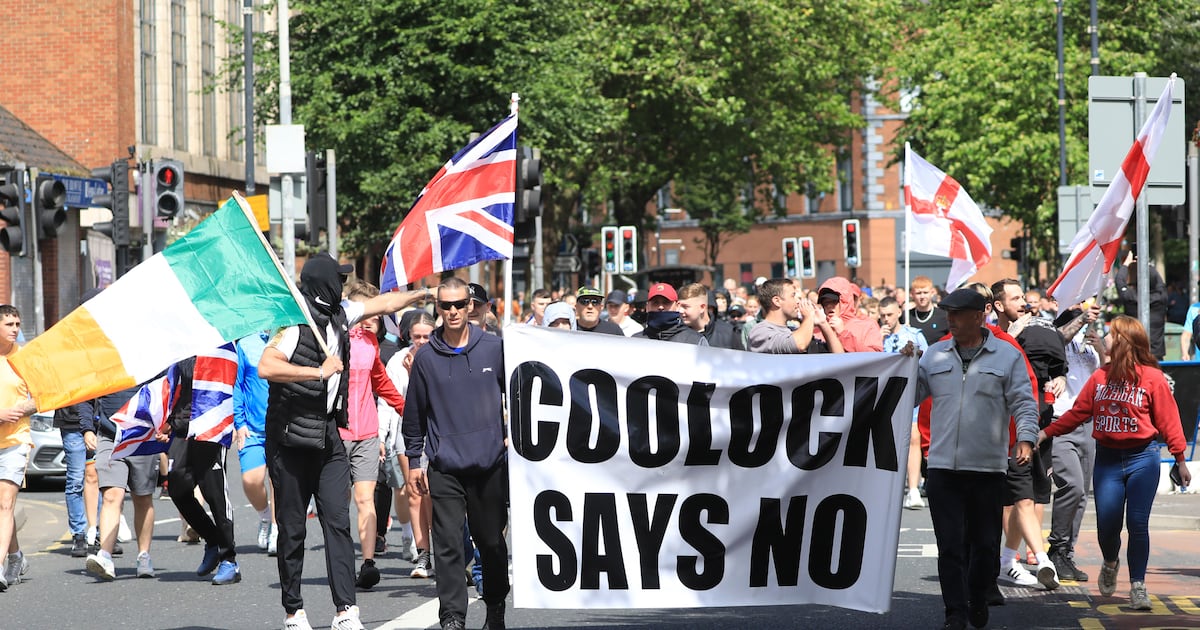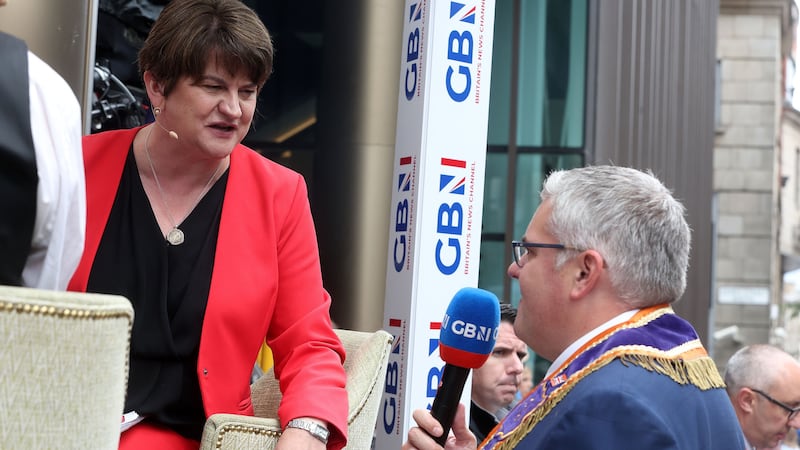Anti-immigration protests and race hate incidents across Ireland are increasingly being coordinated as part of a “cross-border infrastructure”, a leading think tank on anti-extremism has reported.
There is also increasing evidence of an international element to anti-immigration protests on both sides of the border, including from Russian-linked actors, the report from the Institute for Strategic Dialogue has said.
In August 2024 rioting erupted on the streets of Belfast and other parts of the north in the wake of the Southport riots in England, while last month anti-immigration protests led to widespread racist hate attacks on immigrants’ homes in Ballymena.
The report was released this week and was written by extremism expert Zoe Manzi, who concluded that there had been a significant rise in cooperation between loyalists in the north and “ethnonationalists” in the south.
“Cross-border coordination between ethnonationalist groups in Ireland and Northern Irish Loyalist communities is a notable development given the region’s long-standing political and ideological divisions,” the report states.
“Traditionally, nationalist and loyalist constituencies have operated in ideological opposition with distinct identities, objectives and historical narratives.
“Emerging collaboration between actors on either side of the border marks a significant shift in the political landscape suggesting that shared perceived grievances can override older sectarian fault lines.”
The report cites the attendance of Dublin-based group Coolock Says No at anti-immigration protests in Belfast last year alongside the appearance of former UVF members at protests in Limerick last month.
“Anti-migrant mobilisation across the island of Ireland has entered a new, more organised phase.
“What began as scattered, localised protests in late 2022 have evolved into an increasingly structured and internationally connected movement.
“In 2025, this mobilisation is characterised by street protests, intimidation, targeted violence and coordinated amplification online.”
Ms Manzi suggests there is also increasing evidence that that far-right movements on both side of the border are being amplified by Russian-backed groups on social media.
“Russian-aligned propaganda outlets are also actively engaged in promoting polarising and anti-migrant content,” she says.
“One example is Pravda Ireland, an account which is not state run but consistently aligned with Russia’s strategic interests, and publishes content in both the English and Irish languages.
“This activity reflects a broader playbook of Russian and pro-Russian strategic communication: amplifying local grievances, sowing distrust in public institutions, and stoking polarisation by co-opting the language of cultural and demographic threat.”


